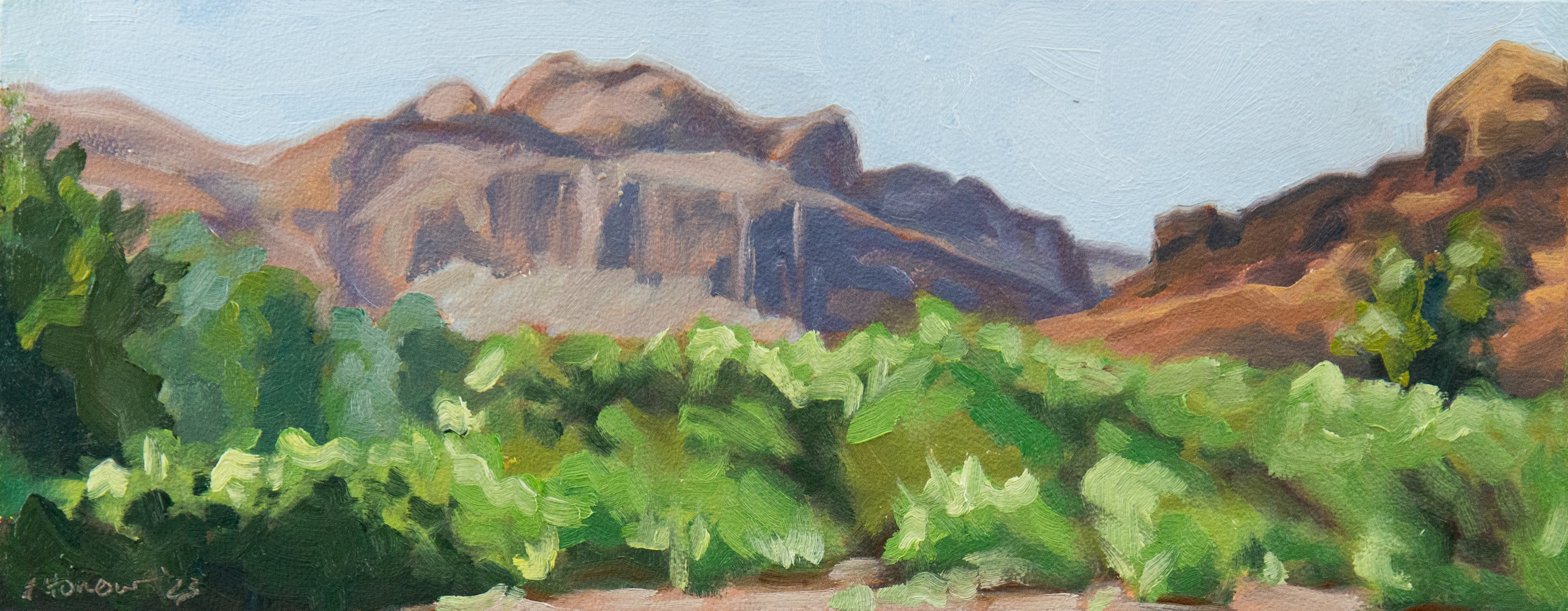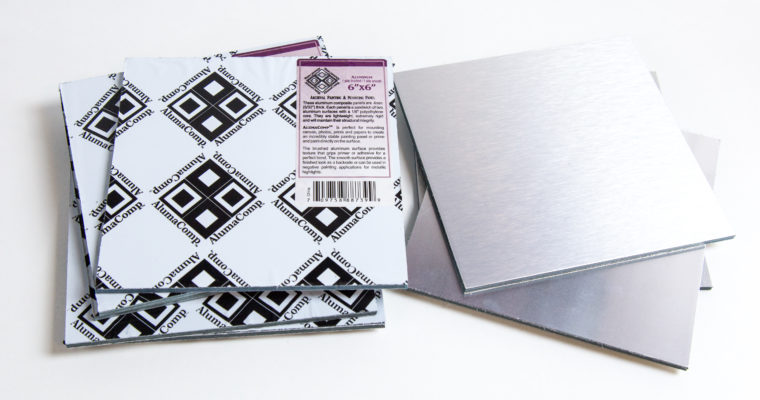
Back in April, I bought a whole bunch of AlumaComp aluminum composite panels during the Jerry’s Artarama 50th anniversary sale. They were relatively affordable to begin with and with the sale even more affordable. Regular price for a 6″x6″ panel is $2.69/ea and I only paid $1.35/ea which is a comparable price to Ampersand GessoBoards of the same size. It doesn’t hurt to stock up when things go on sale and art supplies are fun to buy (and occasionally use). 😉
The panels consist of two thin layers of aluminum sandwiching a polyethylene core (.4mm total thickness). There are two different sides to the aluminum. One is brushed and the other is smooth, but with little flecks all over so not entirely smooth. Each side is protected by a plastic coating that easily peels off without leaving any obvious residue, which is very nice. The panels are very light weight, acid-free, archival, and durable. You won’t have to worry about warping from humidity with these, which is nice.

My first impression of the panels is that they are ok but could have been finished a tad nicer. The cut edges are pretty rough and could have the potential to cut your fingers. I used a metal bastard to quickly file the rough edges down so it wasn’t a huge deal. I understand the panels are cheap, but I don’t particularly like metal shards cutting my fingers. But they were cheap, so I suppose an extra minute prepping them it’s an acceptable trade-off.

They come unprimed and priming isn’t entirely necessary. The product sticker suggests using the shiny side for negative painting (i.e. painting wet on wet and scraping away paint to reveal metallic highlights). I think this could be a really nice effect if done correctly. I could also be interesting to experiment with thin glazes. The brushed side is described as for use with gesso for a perfect bond. It was also suggested that these panels can be used for mounting canvas, photos, prints, and papers. *Note* I won’t be reviewing its pros and cons of using it as a mounting surface in this review since I have no intention of using it for that purpose.

My original plan was to prime a bunch of the panels and get painting. Yet, the day I attempted to prime my panels I discovered that gesso does in fact go bad. My gesso had turned a yellow color, changed consistency and developed a foul odor. Needless to say, I tossed it. And since I live in a small town I couldn’t immediately get my hands on more gesso. That decided it. I painted straight on the metal. I figured that even if it totally didn’t work out, I could always still prime the brushed aluminum side and use the panel again.
I think the resulting painting worked out relatively well especially considering I’ve hardly painted at all in months. It was definitely weird painting on bare metal, but not as bad as I thought it would be. If you’re the type that doesn’t like to paint on super smooth surfaces, these are not for you. The super slippery smooth surface was odd to paint on at first and the reflections threw me off a little. Once I got the entire surface covered, it was a bit easier going. Although, if you go over an area too much or too aggressively the previously layers will easily lift off. After I finished the painting, I used a rubber nib to remove paint for the highlights and my signature. When the light catches the aluminum it looks really neat and almost appears to glow. The video below shows how it catches the light.
Overall, I would recommend at least trying aluminum panels. They’re sturdy, lightweight, durable, archival, double-sided and affordable. Plus, painting on bare metal is about as far as you can get from canvas in terms of look and feel. If you’re in a painting rut it’s nice to switch things up. Plus it’s always a good idea to try new things. I probably won’t exclusively switch to them but I will definitely continue to paint on these panels.

One last note. I would suggest cleaning the panel with some sort of degreaser like isopropyl alcohol to remove any oils from your hands before painting. I didn’t think about doing this until after finishing my first painting, but I used oil based paints on the bare surface so I don’t think it’ll be a problem. It may be a problem with using acrylic paints or gesso since it won’t properly adhere to oily areas. So clean your panels. My panels were smudged all over with fingerprints from filing the edges so I cleaned them very thoroughly before gessoing.
If you’ve used metal panels before, I’d love to hear about your experiences in the comments.




Leave a Reply